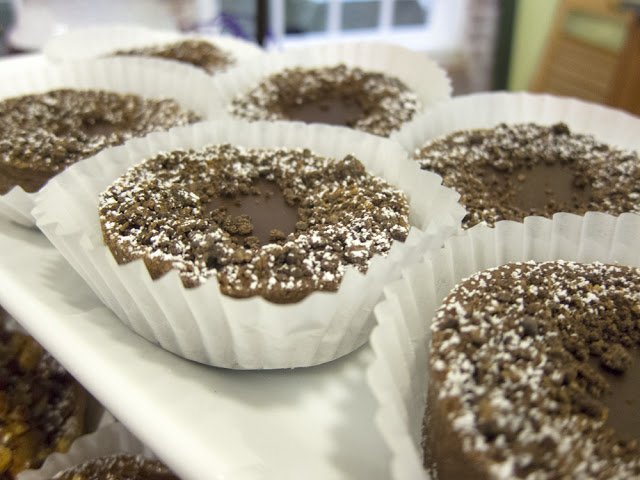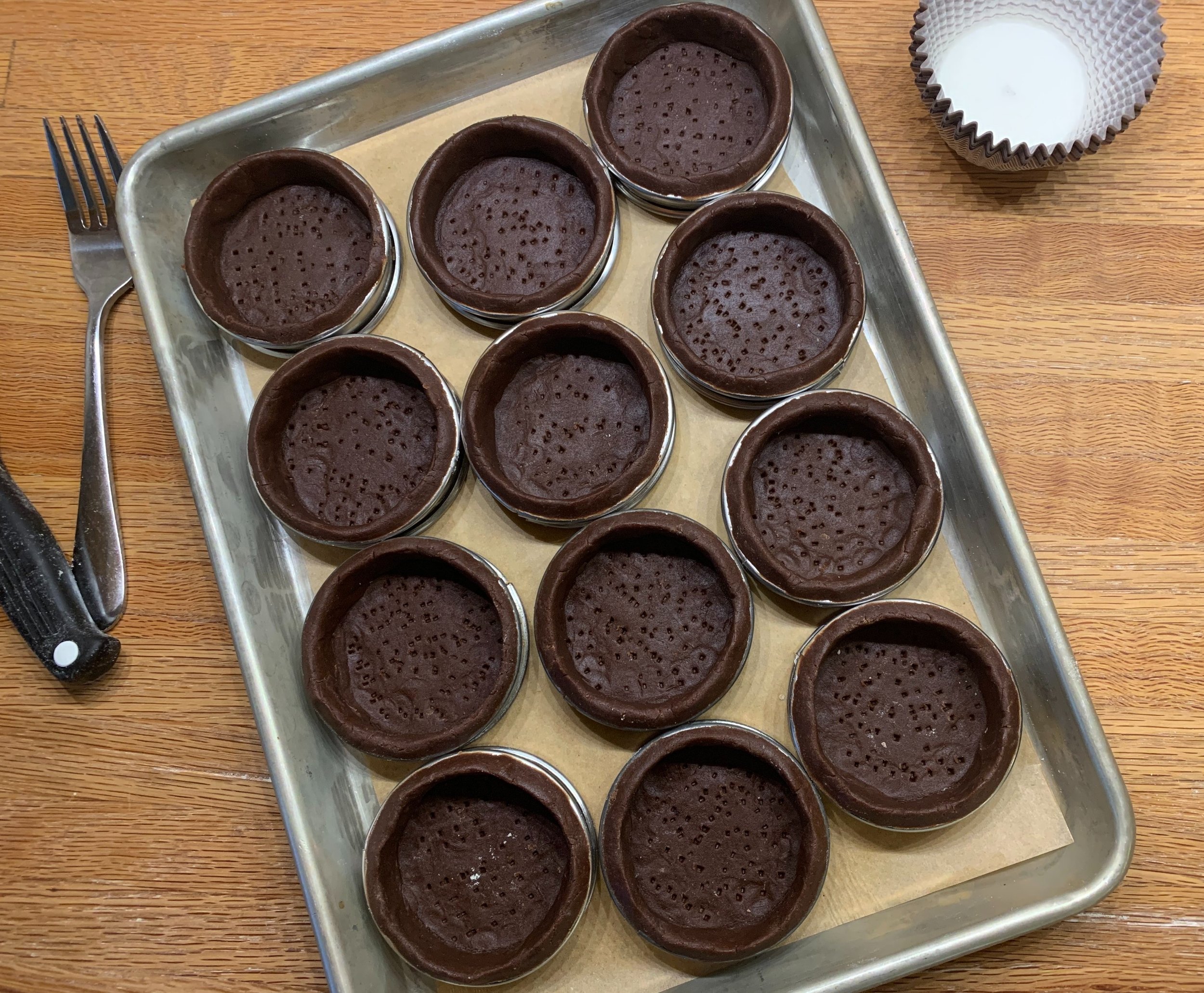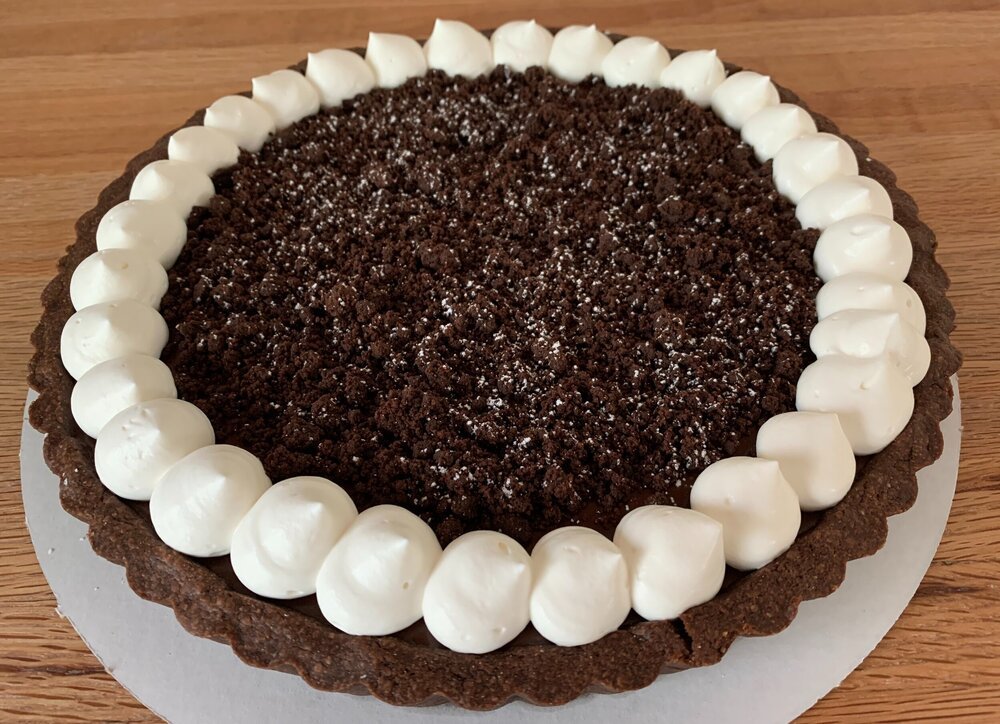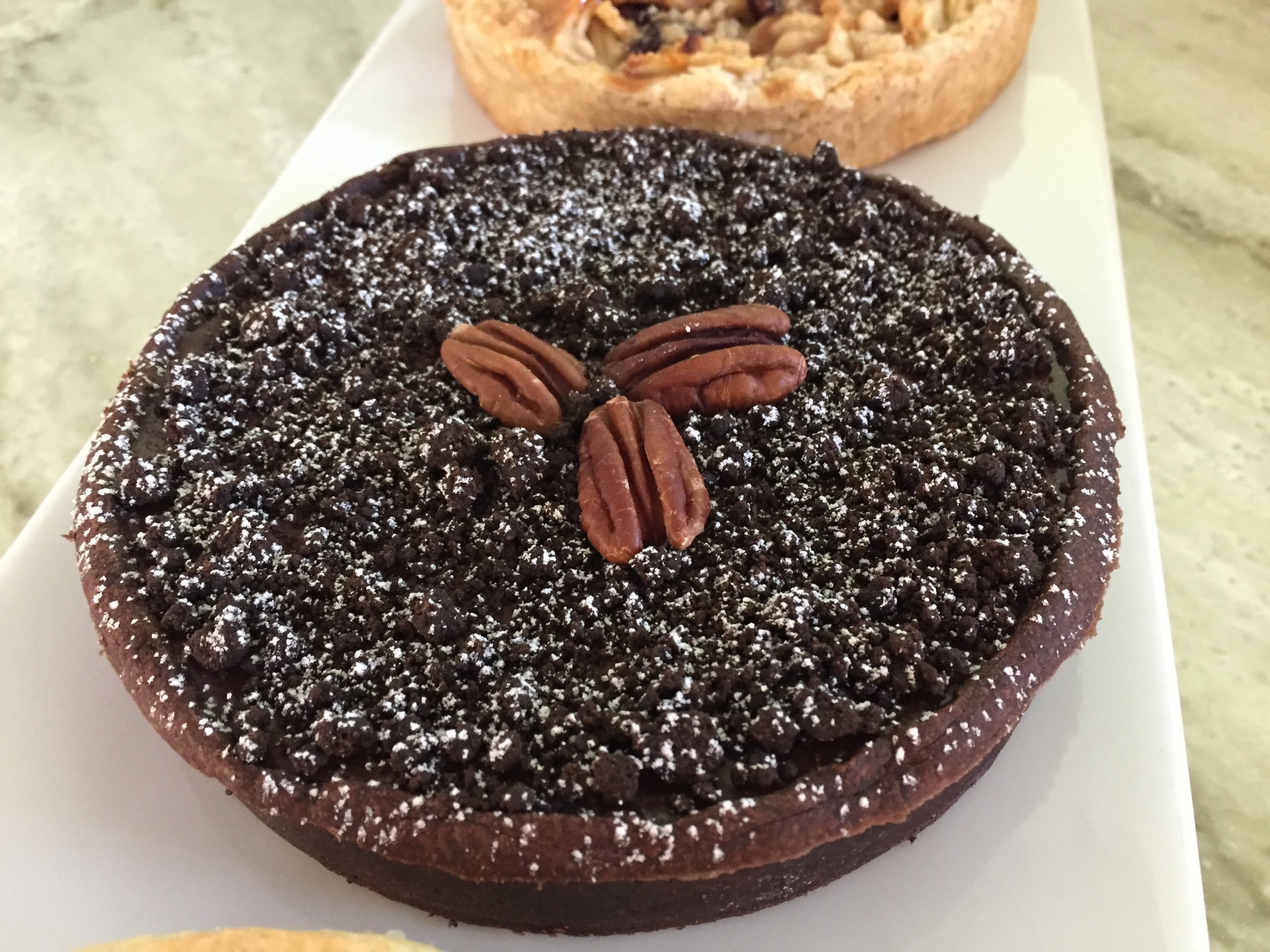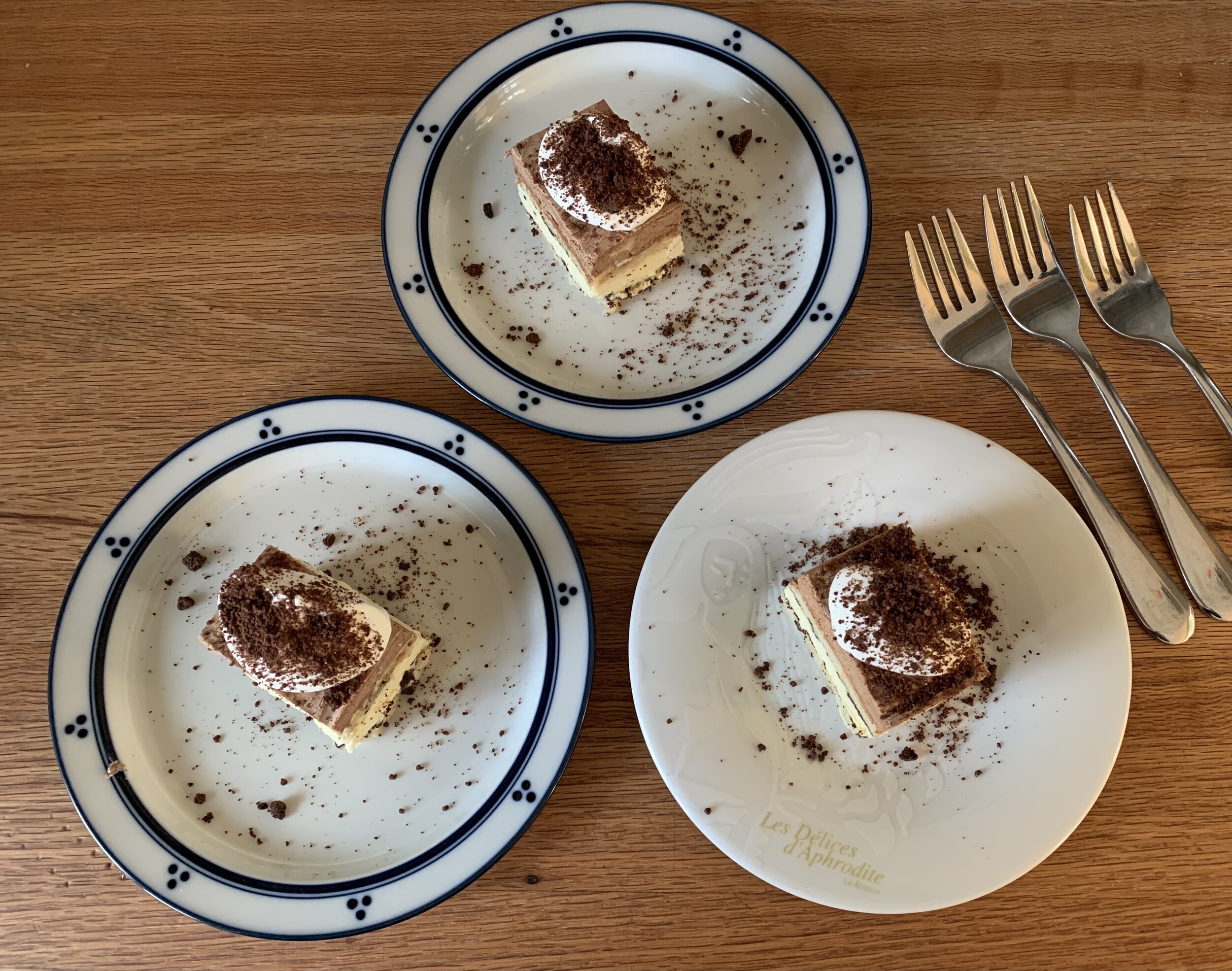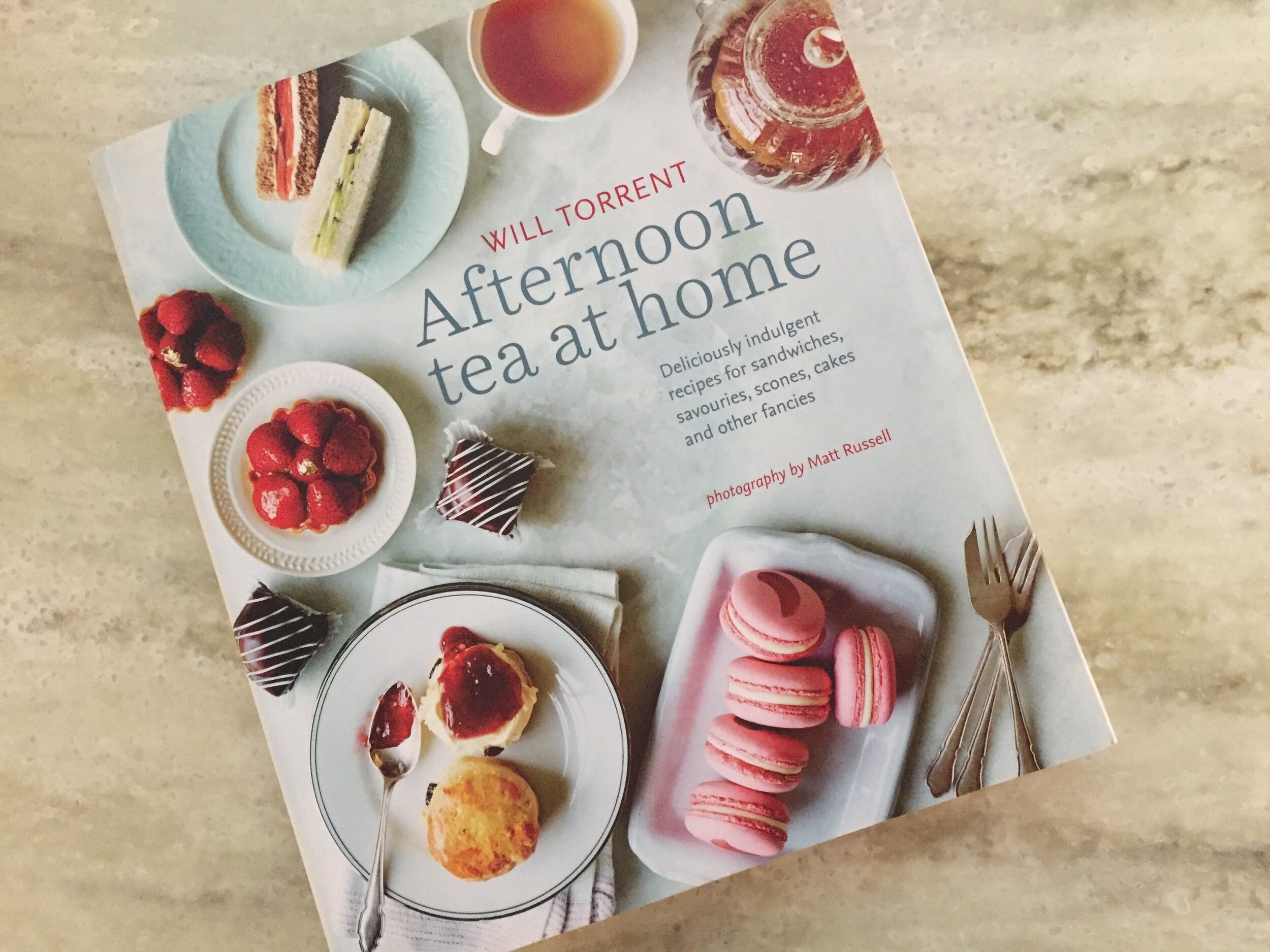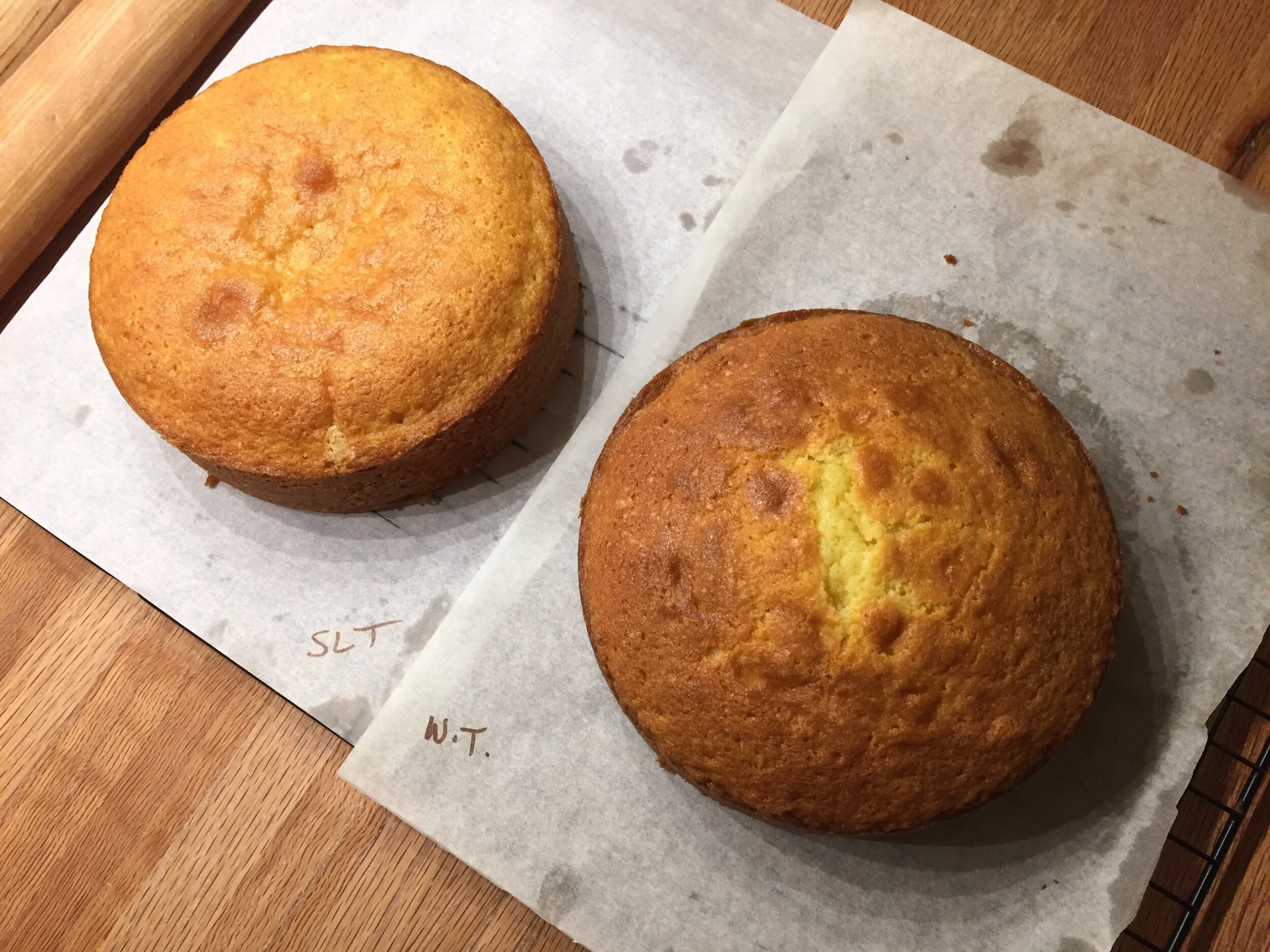Chocolate ganache tarte
/The holidays are here and, as each day brings its own tasks to be tackled or projects to delight us, I want to send all of you my wishes for a very peaceful season.
And what better time to talk about chocolate!!
This ganache tarte is one of my all time faves. The more I consider all of the goodies I’ve created and written about over the years and the things I so enjoy making, the more I realize that the simplest things are usually the best. This delicious treat has been often requested and frequently made, but, believe it or not, even though I’ve perhaps referred to it in various iterations over the years, I’ve never given it top billing. So here goes.
During my Providence/Pawtucket days I made 80 mm individual versions for my retail space, keeping ‘em clean with a sprinkle of chocolate crunchy crumbs and a dusting of confectioner’s sugar. Plain and delicious. Then it’s up to the buyer to leave it au naturel and eat it out of hand or dress it up for serving - dollop on some whipped cream and a few fresh raspberries (for you fruit and chocolate lovers) or top with crunchy candied nuts or some sesame brittle.
Individual ganache tartes
The process utilizes some of the basics in tarte making - cooled blind baked shell; ganache filling poured in and cooled; garnish as you wish; serve and enjoy. Pretty straight forward. You can use either a pâte sucrée au chocolat or a standard pâte sucrée.
As an aside, I’m not intending to overwhelm but to explore options with you for creating your own version of a delicious ganache tarte!
As for planning ahead, be sure you make your chosen dough either the day before or early enough to allow an hour or two for the dough to chill in the fridge before rolling it out. An even better plan-ahead step is to make a double or triple batch of dough a week or two ahead, divide it into approximately 260-280 gram / 9-10 ounce portions and hold them in the freezer well wrapped. The dough keeps for months. Just thaw it in the fridge overnight before using.
You’ll fully blind bake the tarte shell first. When you’re ready, roll out the dough (generally about 260-280 grams / 9-10 ounces for a 9”) and line a 9” tart ring or fluted pan. Place it on a parchment lined sheet pan, prick the bottom all over with a fork and pop it into the freezer for 15-20 minutes to firm it up.
I often do various sizes for different venues. Roll with it (hah! - get it?). You’ll learn to figure out how much filling will work for certain sized tartes. I gauge a double batch of filling should fill the rings below (not including the little brioche tins).
So many choices!
My favorite 65 mm rings - perfect!
7 inch and 5.5 inch rings
You can actually do the lining step a day or two ahead and hold it in the freezer until baking day. No need to thaw it - just line with a round of parchment, fill with weights or dried beans. Bake at 350ºF for 12-15 minutes, then lift out the weights and parchment and bake an additional 5-8 minutes to fully bake/dry the bottom. Cool completely before filling.
Fully blind baked shell
As if there weren’t enough options for this tarte shell, here’s one more way to help with the plan-ahead process. You can freeze the fully baked shell too! There have been times that I’ve had a baked shell in my freezer for several weeks before I decided it was time to fill and enjoy it. So many possibilities!
The ganache filling is as simple as ganache can be. Place 227 g / 8 ounces of chopped dark chocolate or discs/feves in a medium heat proof bowl along with 28 g / 2 tablespoons unsalted butter. Heat 360 g / 1.5 cups heavy cream to boiling then pour the hot cream over the chocolate/butter. Let it sit a minute then gently blend with a whisk or spatula until smooth. Don’t be aggressive with the mixing - you don’t want to aerate it. Blend in 30 ml / 2 tablespoons brewed espresso - I often make a mix of 1/4 cup hot water with a half tablespoon espresso powder as a substitute for the brewed and use 30 ml of that.
Once the ganache is made, pour it directly into the blind baked shell.
Let it sit out at room temperature uncovered for an hour or so to let the heat dissipate before placing it into the fridge (again uncovered) to fully set. If you put it in the fridge right away, you’ll get condensation on the surface - not attractive, believe you me. Plus chocolate doesn’t like that.
Once chilled, garnish away! Crunchy chocolate crumbs, a light confectioner’s sugar dust, whipped cream and voila! It keeps covered in the fridge over several days so don’t feel like you have to eat it all right away!
An option for you nut lovers out there is to spread some toasted chopped nuts of choice coated in caramel on the bottom and pour the ganache over them. You can do fewer nuts and more ganache or more nuts and less ganache. Below are images of a few different sizes I experimented with for Thanksgiving a few years ago.
Pecans and caramel nestled in
Ganache poured over, ready to set
As for how you’d like to garnish your tarte, keep it simple by dolloping some Chantilly cream on each slice and adding some fresh raspberries. The pecan/caramel version below received a layer of chocolate crunchy crumbs, a dusting of confectioner’s sugar and a simple trio of toasted pecans. Yum.
For petite tartelettes, top the already set ganache with a lighter whipped version of chilled 2.5 parts cream to 1 part chocolate ganache and add a simple chocolate disc as decor.
Check out my ganache tips for more fun with ganache.
Petit fours tartelettes
Nothing like a day late and a dollar short. These images are from late October but I had to share a bit of seasonal beauty with you. They say snow’s a comin’!
Bejeweled burning bush
Late season color after a first snowfall - October 31, 2023
Here’s to comforting and grateful days, keeping our spirits and hearts bright, staying active and healthy and hoping for calm around the world. Cheers and, as always, happy baking!


